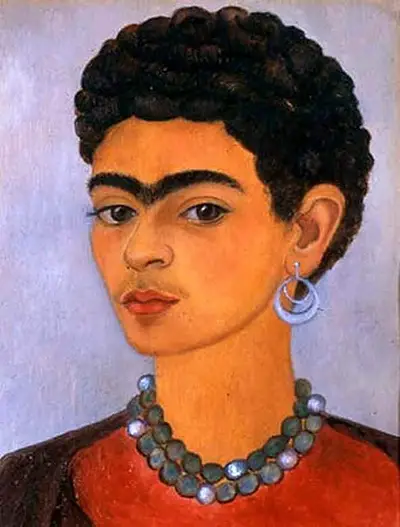What the Painting Portrays
The painting depicts an attempt to assert individuality and influence in her life by cutting off her long hair and discarding her Tehuana costume. Her husband Rivera greatly cherished and loved both things, so wearing regular clothes and permanent curly hair is freedom.
Significance of the artistic look
The painting is an object of devotion. The gigantic emotional content in the small-sized painting is richly painted. The thick eyebrows and sensual frame of her long lashes combined with the caressing gaze make the painting precious.
At first sight, onlookers don't see the troubled self as the curly hairs look straightforward. However, it's an artistic impression of anguish with wounds and tears. The inner feelings of Frida Kahlo are meticulously and delicately painted with sure strokes. The small sheet of tin signifies the naive charm and simplicity familiar in the 12th century Mexican paintings by renowned artists like Hermenegildo Bustos and Marma Estrada. Kahlo and Rivera greatly admired both artists.
Facial looks in the Self-Portrait with curly hair have the calm and searching look of the Fayum portrait panel commonly used in the 2nd century by Egyptians to wrap mummies. Like Fayum portraits, Frida Kahlo painted her eyelashes, white highlights in her eyes, the jaw and cheek outline meticulously. This gives the self-portrait a strong visual punch. The way Frida Kahlo's eyes lock with those of onlookers while carefully calibrating the balance between the ground and figure is outstanding.
What about the year
The painting was done in 1935, which was a turbulent year in Frida Kahlo's life. Just like the previous year (1934), which was miserable as she didn't produce any painting. The only other painting work done in 1935 was the A few Small Nips which depicted a woman stabbed to death by a lover. According to Frida Kahlo, she felt the same way, murdered by life.
What brought the artistic paralysis
The marital anguish after returning with her husband Rivera from New York contributed significantly to her dissolute state. She experienced depression and sickness. Her husband complained about not working, blaming it on Kahlo's insistence to return home from New York. This led to Frida Kahlo being hospitalized on several occasions in 1834 for a therapeutic abortion, appendicitis, and right foot operation. During this time, Rivera had affairs with different women. Her husband's affair with Christina was her breaking point.

